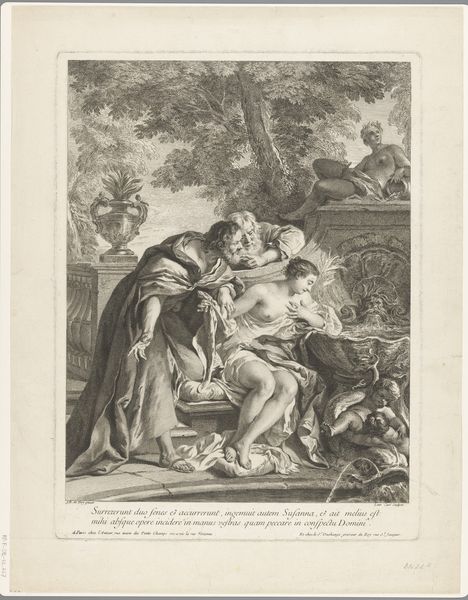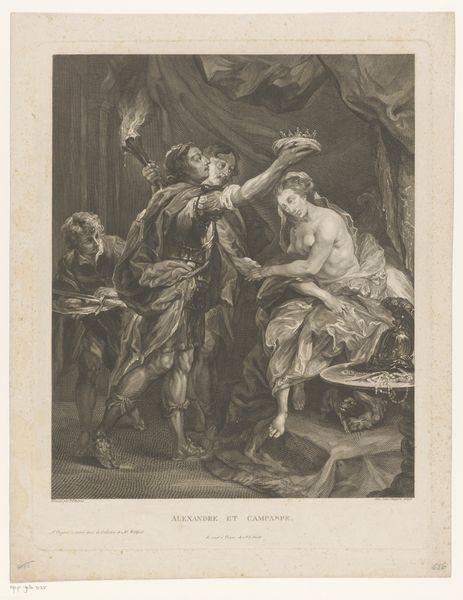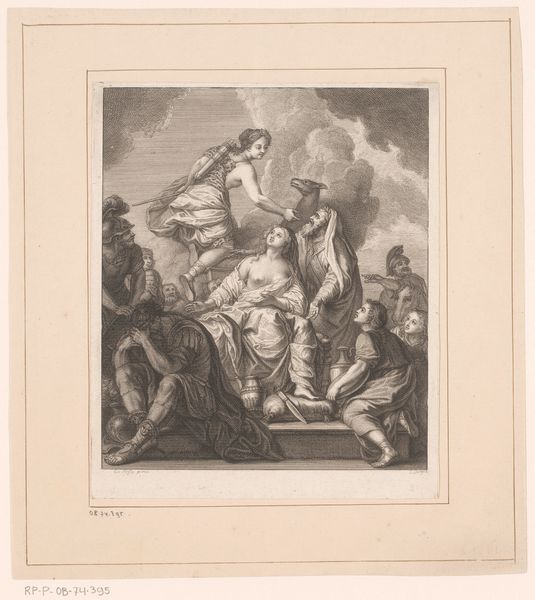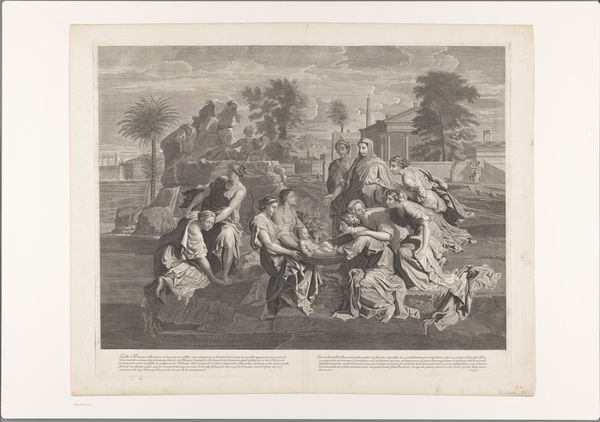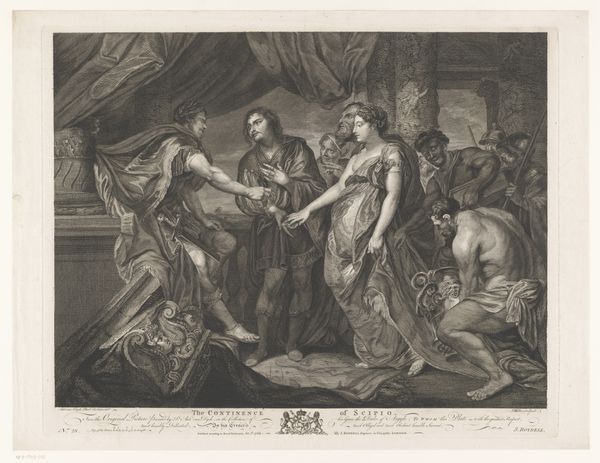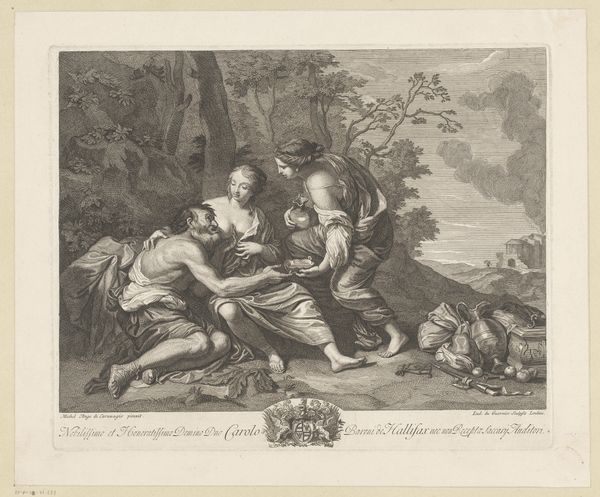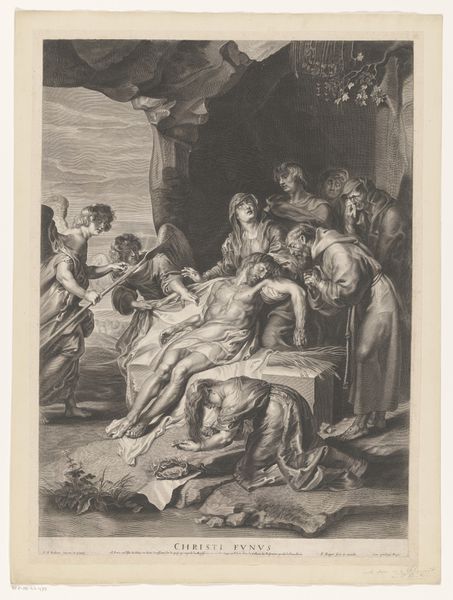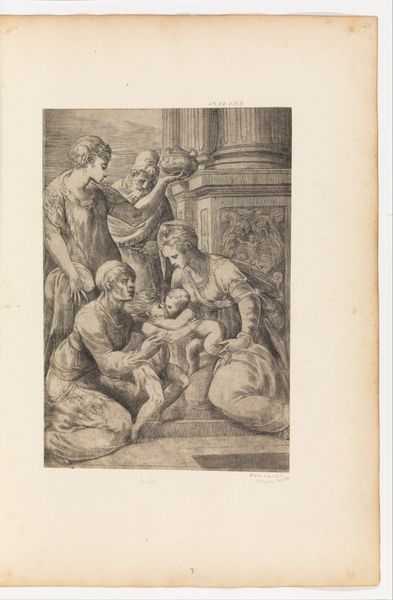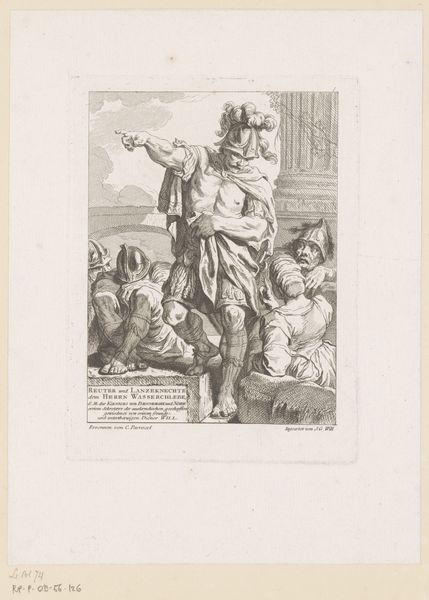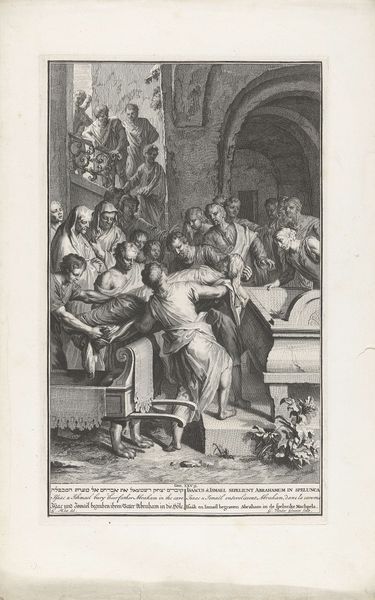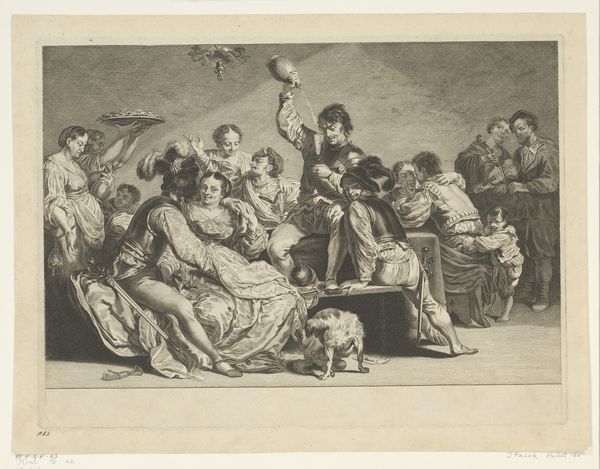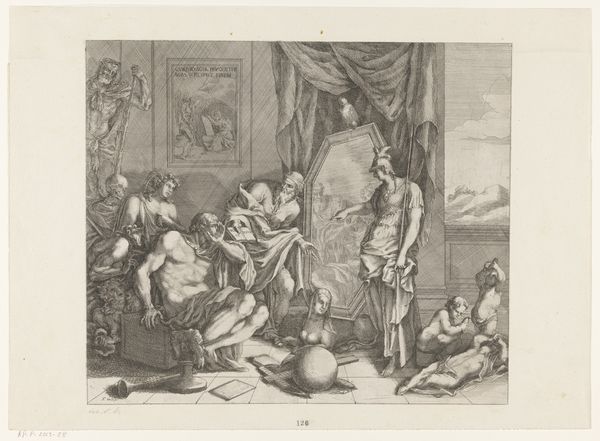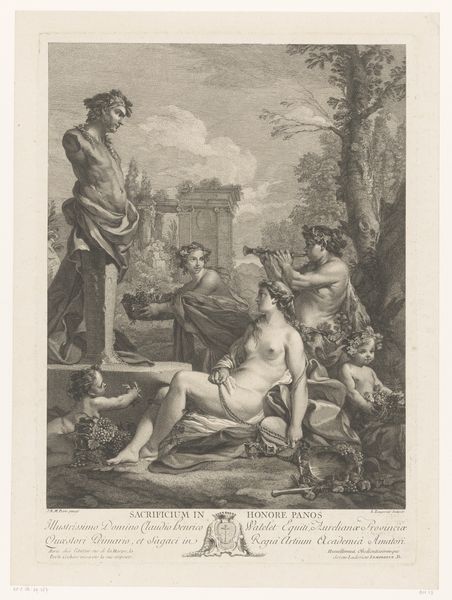
Dimensions: height 512 mm, width 358 mm
Copyright: Rijks Museum: Open Domain
Curator: Let’s turn our attention to "Maria met Christuskind, H. Magdalena en H. Hieronymus," a baroque engraving from between 1763 and 1771 by Robert Strange. It’s a rather detailed print, even in reproduction. Editor: Yes, the overall impression is quite striking. The contrast between the deep blacks and crisp whites really emphasizes the figures, and imbues it with a sense of solemnity. Almost feels like a stage set. Curator: Indeed. Robert Strange was known for his skill in reproducing paintings through engraving. His process involved meticulous layering of lines and textures to replicate the tonal qualities and details of the original artwork. Think about the labor invested, the acid baths, the progressive deepening of lines—a real transformation of materials. Editor: It’s intriguing how Strange translates painting to print, choosing which iconic elements to foreground. The Virgin Mary and the Christ Child are, of course, central. But look at Saint Jerome there with the lion, a clear signifier of scholarship and devotion. Magdalena seems almost overwhelmed, doesn't she? It’s a classic composition, yet charged with recognizable emotion. Curator: The social context is essential. Prints allowed for wider dissemination of images, making art more accessible to a broader audience. This piece provided people a way to connect with these figures outside of an elite context. How many hands touched the plate as it was polished? How many prints were produced? Consumption of images itself becomes a cultural practice we have to recognize. Editor: The figures themselves feel like carefully coded symbols, readily understood within a specific cultural framework. The arrangement invites meditation on themes of maternal love, divine grace, and repentance. And how Saint Jerome’s presence lends intellectual authority to the entire scene! It’s like a visual theological statement. Curator: It's tempting to consider how prints like this influenced workshop practice or accessibility to artwork outside its usual display venue, changing audience reception itself through reproductions for new markets. Editor: Absolutely, this print shows us how artists shape collective memory, creating enduring images through carefully chosen symbols and gestures. A compelling example of the power of visual language.
Comments
No comments
Be the first to comment and join the conversation on the ultimate creative platform.
